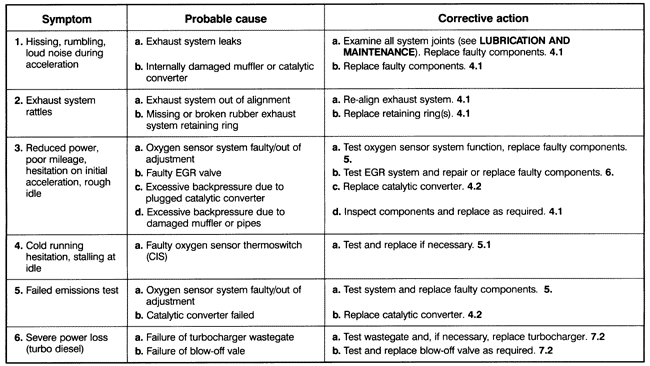3.1 Basic Troubleshooting PrinciplesAs with any troubleshooting, analysis of the observed symptoms is the key to isolating and identifying exhaust and emission systems problems. Begin with careful observation, keeping in mind the following questions: How has the problem developed? A symptom which develops quickly usually indicates damage or failure of an isolated part. In the case of the exhaust system, such damage or failure may be due to striking a road hazard. Noise is, of course, the main indicator of exhaust system problems. A gradual increase in noise level is more likely a general indication of the condition of the whole system. More extensive repair, perhaps complete replacement, may be necessary. Is the symptom rpm dependent? The correct amount of backpressure helps the engine produce power smoothly over a wide range of engine speeds. Excessive backpressure due to failed or damaged components may cause poor performance, rough idling, or stalling. The catalytic converter with its small passages is especially susceptible to plugging if it gets overheated or if the car accidently burns leaded fuel. On turbo diesels, loss of power at higher rpm may indicate a failed turbocharger. Is the symptom temperature dependent? Cold running problems are almost certainly not caused by the oxygen sensor system, since the fuel injection system operates without it when the engine is cold. Table a lists problems commonly associated with the exhaust and emission control systems, their probable causes, and suggested corrective actions. The numbers in bold type in the corrective action column refer to the numbered headings in this section of the manual where the suggested repairs are described. Table a. Exhaust and Emission Control Troubleshooting
|
